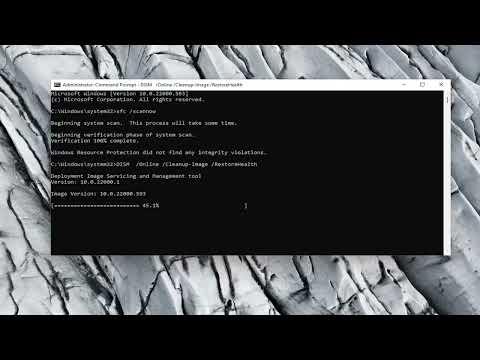I remember the day vividly when my Windows 11 system decided to throw a wrench into my otherwise smooth workflow. I had just finished an intense project and wanted to tweak some settings to optimize my computer for the next task. However, when I tried to open the Windows Settings app, nothing happened. The icon in the Start Menu flickered briefly, and then the screen returned to normal as if nothing had happened. I tried multiple ways to open it—using the search bar, right-clicking the Start button, and even using keyboard shortcuts like Windows + I, but nothing worked. My frustration was growing as I realized how crucial it was to access the Settings app for my ongoing projects and system maintenance.
The first step I took was to make sure that it wasn’t a simple glitch or a temporary hiccup. I rebooted my computer, hoping that a fresh start might resolve the issue. However, after the restart, the problem persisted. I tried opening other applications and adjusting system preferences from other areas, but everything seemed to be functioning normally except for the Settings app. This indicated to me that the issue was isolated to the Settings app itself.
Determined to find a solution, I decided to delve into some troubleshooting steps. I began by checking for any pending Windows updates. Sometimes, an update can resolve underlying issues with system applications. I navigated to the Windows Update section through the Taskbar, but this approach was futile since the Settings app wouldn’t open.
Next, I attempted to use the Control Panel as an alternative way to access system settings. While this wasn’t a perfect replacement, it allowed me to check and adjust some settings that I needed urgently. However, it became clear that this was just a temporary workaround, not a solution to the root problem.
Realizing that I needed a more in-depth fix, I turned to the Command Prompt. I ran the System File Checker tool by entering sfc /scannow in the Command Prompt window. This tool scans for corrupted system files and attempts to repair them. The scan completed, and it reported that it had found and fixed some errors. I was hopeful that this might solve my issue, but after rebooting my computer, the Settings app was still non-responsive.
Determined not to be defeated, I decided to use PowerShell, which is another powerful tool for system management. I opened PowerShell as an administrator and ran the command Get-AppxPackage *WindowsSettings* | Reset-AppxPackage. This command attempts to reset the Settings app to its default state. After running it, I rebooted my system again, but once again, the issue persisted.
Next, I checked the Event Viewer for any error logs that might give me a clue as to what was going wrong. I navigated to the Event Viewer by typing Event Viewer into the search bar (which was still functional), and reviewed the logs related to application errors and system issues. I found several error messages related to the Settings app, which suggested there might be a deeper issue with the app’s internal configuration.
Armed with this information, I decided to try a more comprehensive approach: performing a system restore. I accessed the System Restore tool through the Control Panel, selecting a restore point from before the issue began. This process involves reverting the system to an earlier state, which can sometimes fix issues caused by recent changes. I followed the prompts, and after the restoration process completed, my system rebooted. However, the problem with the Settings app remained unresolved.
By this point, I was running out of options and considered a more drastic measure. I decided to create a new user account to see if the issue was specific to my user profile. I went to the User Accounts section through the Control Panel and created a new account with administrative privileges. After logging into the new account, I attempted to open the Settings app. To my relief, it worked perfectly in the new profile. This suggested that the issue was related to something specific to my original user profile.
To fix this, I decided to transfer my files and settings to the new user account. I used the built-in Windows migration tool to copy over important documents, desktop files, and application settings. After ensuring that everything was in place, I deleted the problematic original user profile. This step seemed extreme, but it provided a practical solution to the problem I had been facing.
In conclusion, encountering the issue with the Windows Settings app not opening in Windows 11 was incredibly frustrating. From trying simple fixes like rebooting and checking for updates to more involved solutions like using PowerShell and creating a new user account, the process required patience and perseverance. Ultimately, transferring my files to a new user profile resolved the issue, allowing me to regain access to the Settings app and continue working without further disruptions. This experience was a reminder of the importance of keeping system backups and being prepared for unexpected technical challenges.
